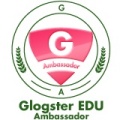Did you know that you can use magnetic letters to draw on a Magna Doodle? Yes that’s right, you can! As a teacher I’ve seen and used Magna Doodles for handwriting with the pen. I’ve seen and used magnetic letters and dry erase pens used on whiteboards. I’ve also seen and used Smartphones and touchscreen tablets for writing letters with fingertips. I have never seen magnetic letters used on Magna Doodles.
Recently, while playing with Melisa and Doug large magnetic letters with my son, and while having him draw with the pen on the Magna Doodle, it occurred to me…”hmm I bet these magnets with stick to the Magna Doodle…I bet they’ll leave letter imprints on the board.” I tried it, and it worked! My sons eyes grew wide open. He was in awe! Guess what? It’s one of his favorite things to do now. You’d think as a teacher I and others would have thought of this before. If you’ve tried this you are the few I know who have.
Here’s why using large magnetic letters on the Magna Doodle seems to be better than other methods:
1. Children get to feel the tactile magnetic letters while using them on the Magna Doodle just like they get to do when using them on a whiteboard. Children do not get to feel the tactile letters when using a touchscreen device. When using a touchscreen, the only tactile feeling they get is through drawing letters with their fingertips. Although sometimes that is beneficial to learning, it lacks three dimension play and interaction with the letters. Using magnetic letters on a Magna Doodle allows children to have full tactile interaction with the letters.
2. Although magnetic letters are great on a whiteboard, whiteboards still limit the interaction and play that children could fully have. Whiteboards allow moving magnets around and allow children to draw with dry erase pens. The same thing can do done on a Magna Doodle, so why not use a Magna Doodle which gives more versatility. Why is it more versatile? Continue reading and you’ll find out.
3. Magna Doodle interaction and play is much more engaging through kinesthetic means. Children not only can move magnets around and draw with the pen like on whiteboards, they can also imprint and stamp the magnetic letter impressions onto the Magna Doodle. On the Magna Doodle they can then use the magnetic pen to trace over the stamped letter on the board. Children can also trace the stamped letter with their finger without erasing the writing. If this were to be tried on a whiteboard, the writing would be erased because the writing would happen be from a dry erase marker, not to mention, magnetic letter impressions cannot be stamped on a dry erase board. Magna Doodle boards have a textured top, so as the child traces their finger on the board they are tracing a textured top and can feel the tactile surface better. This helps the brain engage in the learning process, and helps promote learning retention.
All the above can be done on one inexpensive Magna Doodle. To do the same with other supplies, you’d have to have numerous supplies (whiteboard, dry erase pen, magnetic letters, paper, letter stamps that have to dry, and/or a touch screen computer). That is a lot of supplies, costly and not as effective.
The only drawback I see against Magna Doodle use is that dry erase boards allow a child to write with various pen colors. Magna Doodle pens only allow writing in one color. Sometimes teaching word building and spelling is better when using colored pens for phonics and syllables so Magna Doodles may not be best in those cases. However, Magna Doodles seem better than whiteboards for teaching the alphabet and basic word work.
Here are some pictures working with my son. You can vary the complexity of the letter tracing and writing tasks depending on the child’s age.
*Update: I forgot to mention this. The same concept could be used in the music classroom with magnetic music notes and staff strips.
Related articles
- Amazing Alphabet: Using Magnetic Letters to Master Early Literacy Skills (education.com)
- Pinned It, Did It – Free Printable Alphabet and Initial Sound Strips for Matching (wordsofhisheart.wordpress.com)












Discussion
No comments yet.